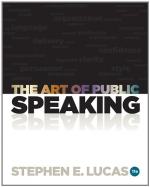This is a highly important statement. Variety in pitch maintains the hearer’s interest, but one of the surest ways to compel attention—to secure unusual emphasis—is to change the pitch of your voice suddenly and in a marked degree. A great contrast always arouses attention. White shows whiter against black; a cannon roars louder in the Sahara silence than in the Chicago hurly burly—these are simple illustrations of the power of contrast.
“What is Congress going to do next? ----------------------------------- (High pitch) | | | I do not know.” ----------------- (Low pitch)
By such sudden change of pitch during a sermon Dr. Newell Dwight Hillis recently achieved great emphasis and suggested the gravity of the question he had raised.
The foregoing order of pitch-change might be reversed with equally good effect, though with a slight change in seriousness—either method produces emphasis when used intelligently, that is, with a common-sense appreciation of the sort of emphasis to be attained.
In attempting these contrasts of pitch it is important to avoid unpleasant extremes. Most speakers pitch their voices too high. One of the secrets of Mr. Bryan’s eloquence is his low, bell-like voice. Shakespeare said that a soft, gentle, low voice was “an excellent thing in woman;” it is no less so in man, for a voice need not be blatant to be powerful,—and must not be, to be pleasing.
In closing, let us emphasize anew the importance of using variety of pitch. You sing up and down the scale, first touching one note and then another above or below it. Do likewise in speaking.
Thought and individual taste must generally be your guide as to where to use a low, a moderate, or a high pitch.
QUESTIONS AND EXERCISES
1. Name two methods of destroying monotony and gaining force in speaking.
2. Why is a continual change of pitch necessary in speaking?
3. Notice your habitual tones in speaking. Are they too high to be pleasant?
4. Do we express the following thoughts and emotions in a low or a high pitch? Which may be expressed in either high or low pitch? Excitement. Victory. Defeat. Sorrow. Love. Earnestness. Fear.
5. How would you naturally vary the pitch in introducing an explanatory or parenthetical expression like the following:
He started—that
is, he made preparations to start—on
September third.
6. Speak the following lines with as marked variations in pitch as your interpretation of the sense may dictate. Try each line in two different ways. Which, in each instance, is the more effective—and why?
What have I to gain from you? Nothing.
To engage our nation in such a compact would be an infamy.
Note: In the foregoing
sentence, experiment as to where the
change in pitch would better
be made.




